What to do in Wittenberg, Germany? In this city, officially called "Lutherstadt Wittenberg", almost everything is about the reformer Martin Luther. This also makes the city interesting, and a bit different. Here are our top tips!
Innehållsförteckning
Wittenberg
Wittenberg was an important centre of politics, culture and art in the 16th century and served as the capital of the Saxon Electors. It is best known for the fact that the Reformation was thought to have started here when Martin Luther nailed his 95 theses to the door of the castle church. Today, several sites in the city are listed as UNESCO World Heritage Sites for their connection to this historical development.
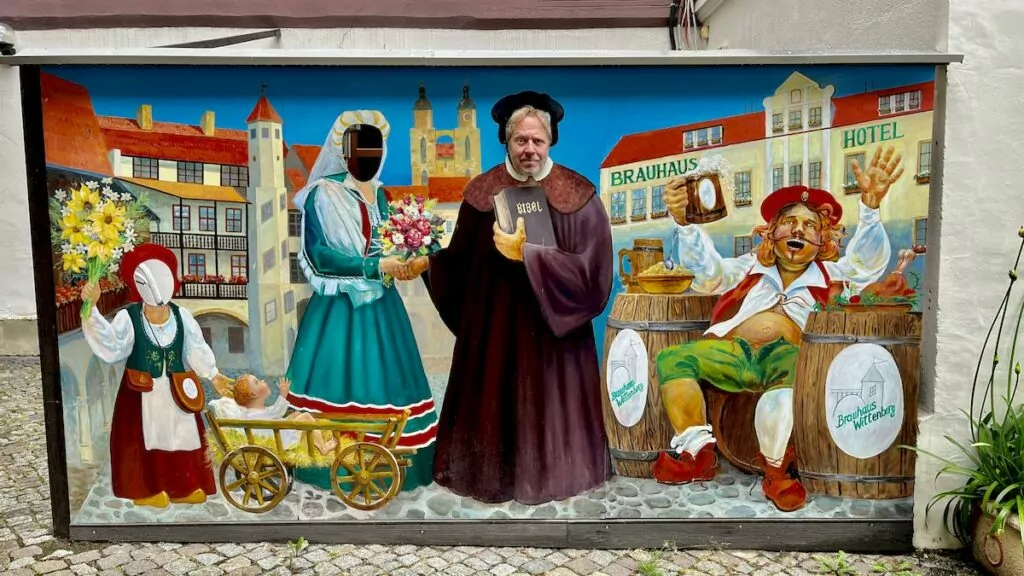
We visited the city during our motorhome trip, and must say that this place made for a nice and interesting stop.
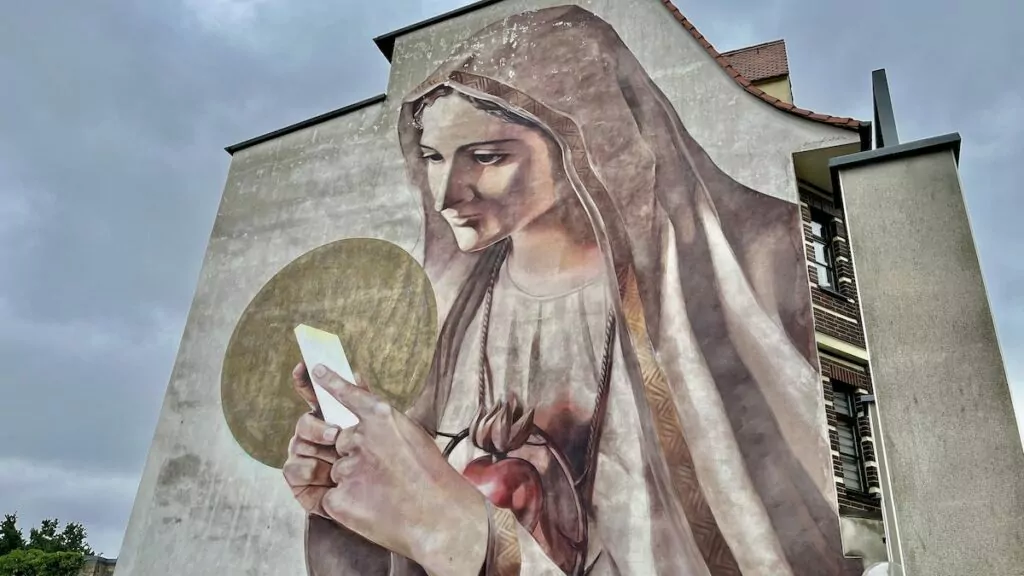
Wittenberg is located in the federal state of Saxony-Anhalt in eastern Germany. The city is about seven miles north of Leipzig, and about 11 miles southwest of the capital Berlin.
What can you do in Wittenberg?
So what can you see and do in Wittenberg? The city has a strong focus on Martin Luther and the history of the Reformation, making it a very special place to visit. Of course, there are also a number of other things to see and do. We've gathered our top tips here in a list.
1. See the castle church and the gate with the theses
All Saints' Church, or Schlosskirche (Castle Church) as it is commonly known, is a powerful Lutheran church in Wittenberg. It is on the door of this church that Martin Luther nailed the 95 Theses in 1517, which is considered the start of the Protestant Reformation. Today, the old gate has been replaced by a new one, where the theses are permanently engraved.
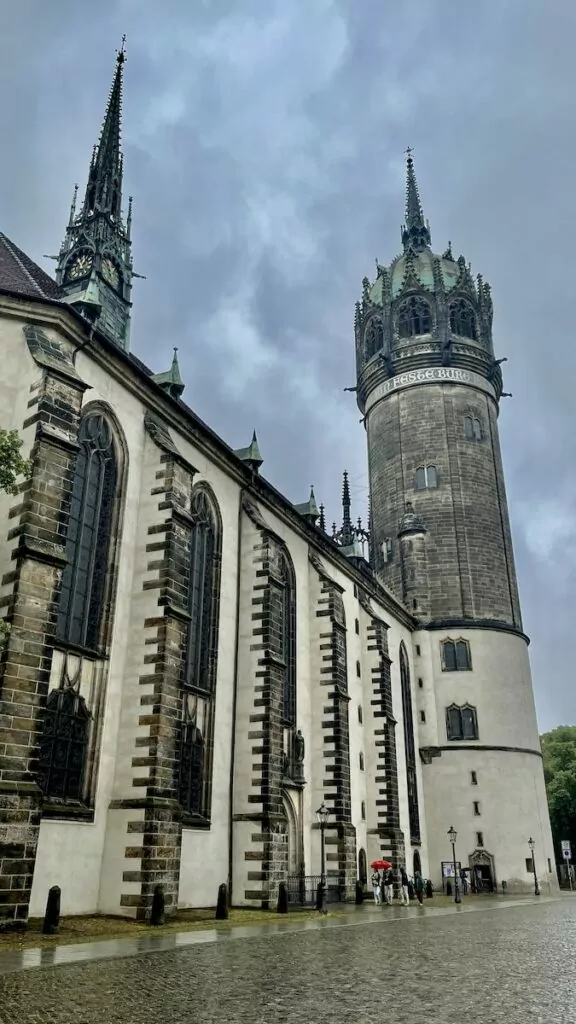
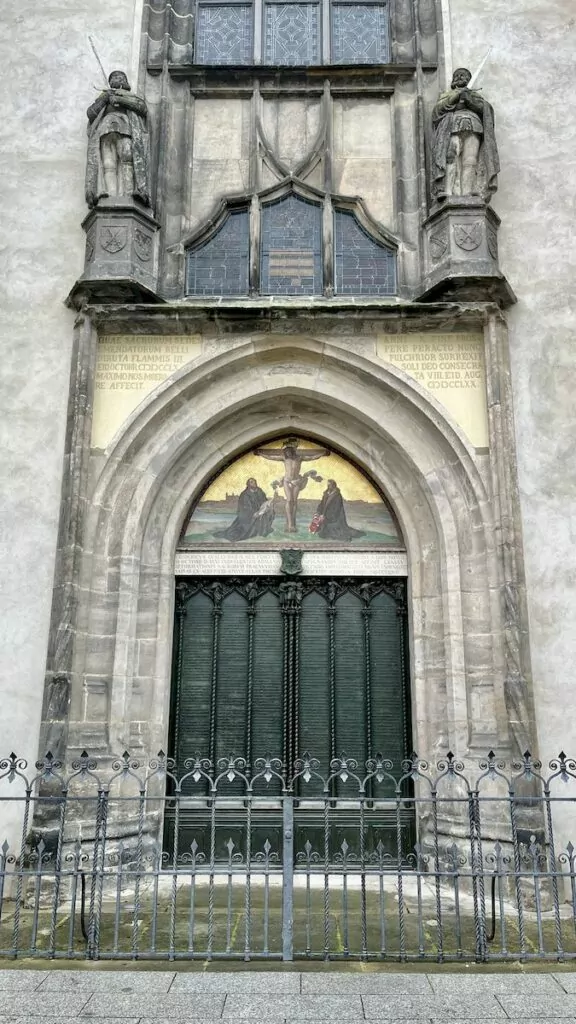
Because of its religious significance and testimony to the impact of the Reformation on the world, the church was inscribed on the UNESCO World Heritage List in 1996, along with other sites in Wittenberg and Eisleben associated with Martin Luther and Reformer Philip Melanchthon.
The historic church can be visited inside, by purchasing a ticket for the church and the castle museum. If you wish, you can also buy a combination ticket, together with an exhibition of works of art or together with the city church.
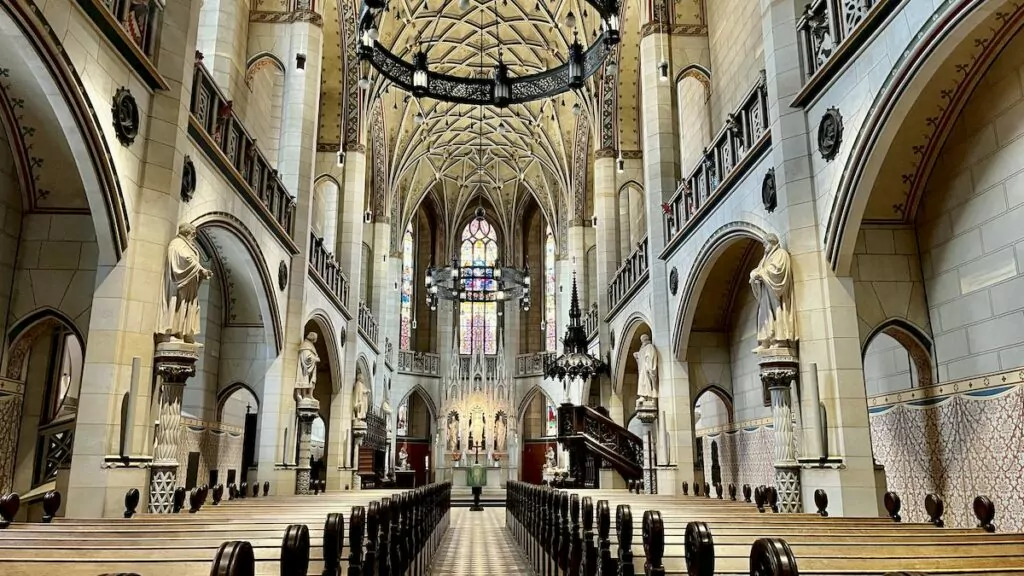
2. peek into the castle museum
Wittenberg Castle is connected to the Castle Church and was historically the residence of the Saxon Electors. In the 16th century, it was one of the most magnificent early Renaissance fortified castles in Germany. Today, after several fires and the decline of Wittenberg's importance, little remains of the castle's former splendour.
However, you can visit the Castle Museum, where you can learn about Martin Luther, among other things. In the pictures below you can see Peter studying the theses and a computer image showing that I (Helena) was the 51st museum visitor from Sweden since 2017. It was still a bit thin ... We can definitely recommend a visit here!
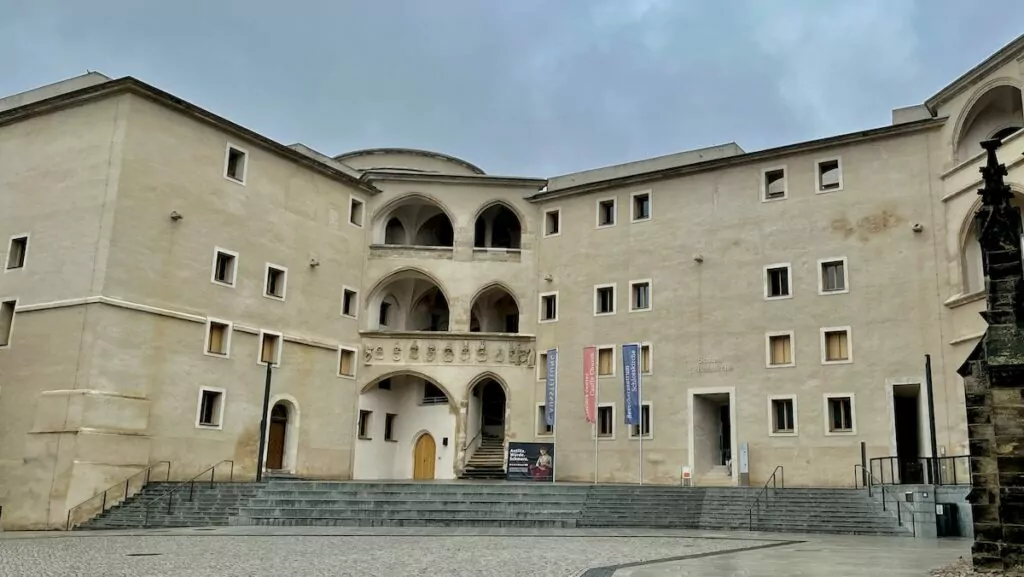
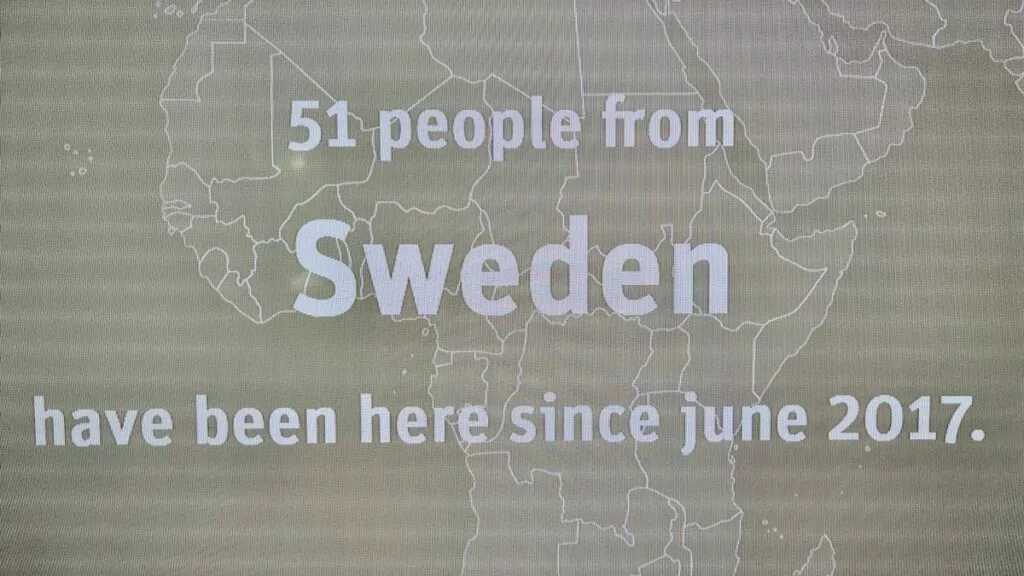
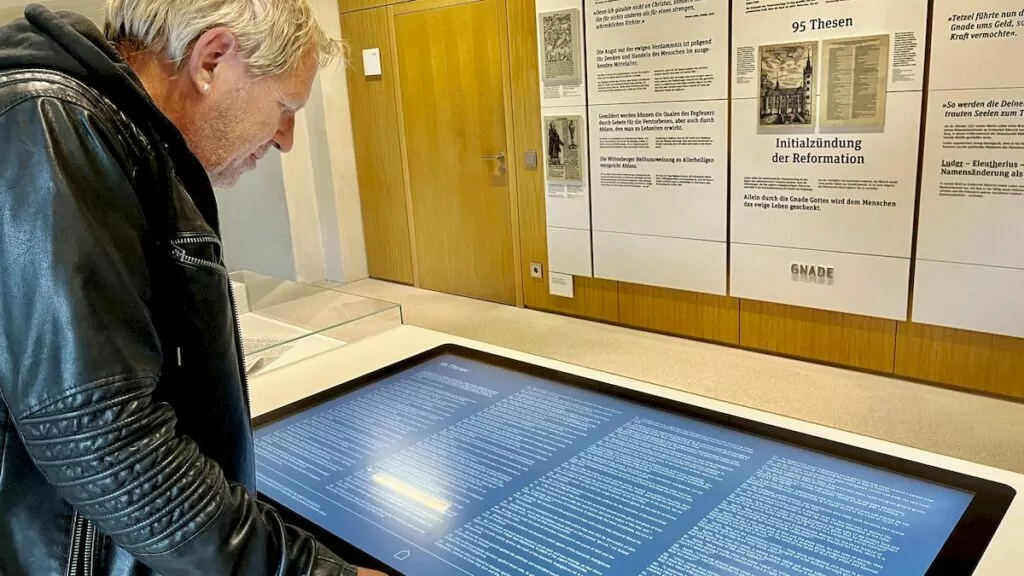
3. Urban walking
Wittenberg is a town full of historic houses, which can tell you about the times that have passed. The city's tourist office organises various guided tours, which can be interesting to join.
Another option is to pick up a map at the tourist office, where the most important buildings are marked, and follow it on your own. Outside most of these buildings you will then find a sign telling you more about the place.
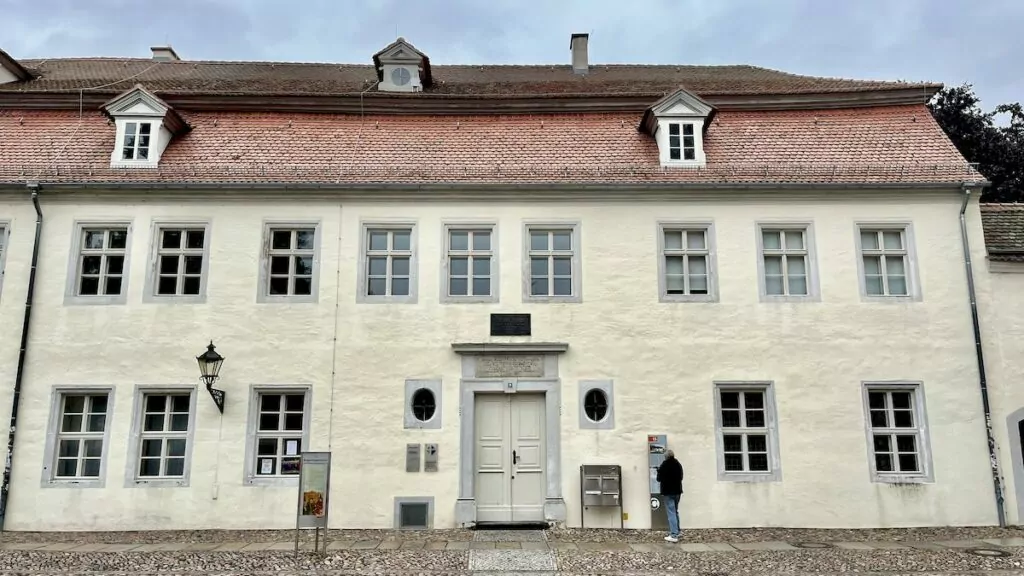
In Wittenberg, you'll also find plenty of signs telling you about historical figures who have lived in the town or visited. For example, we found a sign telling us that the Swedish King Gustav II Adolf visited the town in 1631.
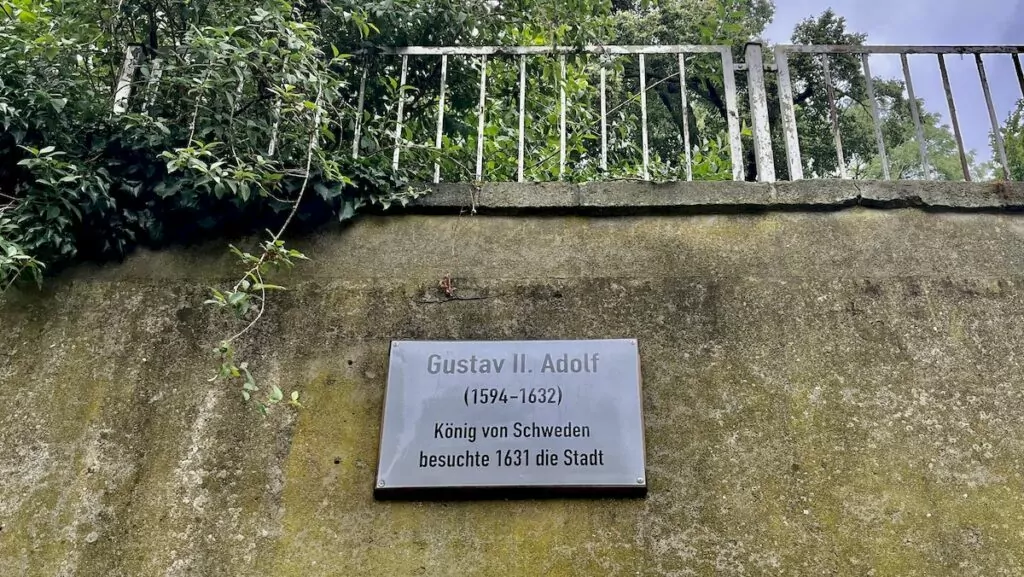
4. Admire the square and the town hall
When you visit Wittenberg, it's natural that you'll end up in the square (Wittenberger Martplatz) with the old town hall (Altes Rathaus) from 1541. The square is surrounded by beautifully restored Renaissance houses, and behind them you can also see the town church rising up.
Throughout history, this square has been a busy place, with everything from vegetable sales to executions. Even today, it hosts crowd-pleasing events such as the Christmas market, 'Luther's Wedding' on 1 June and the Reformation Festival on 31 October.
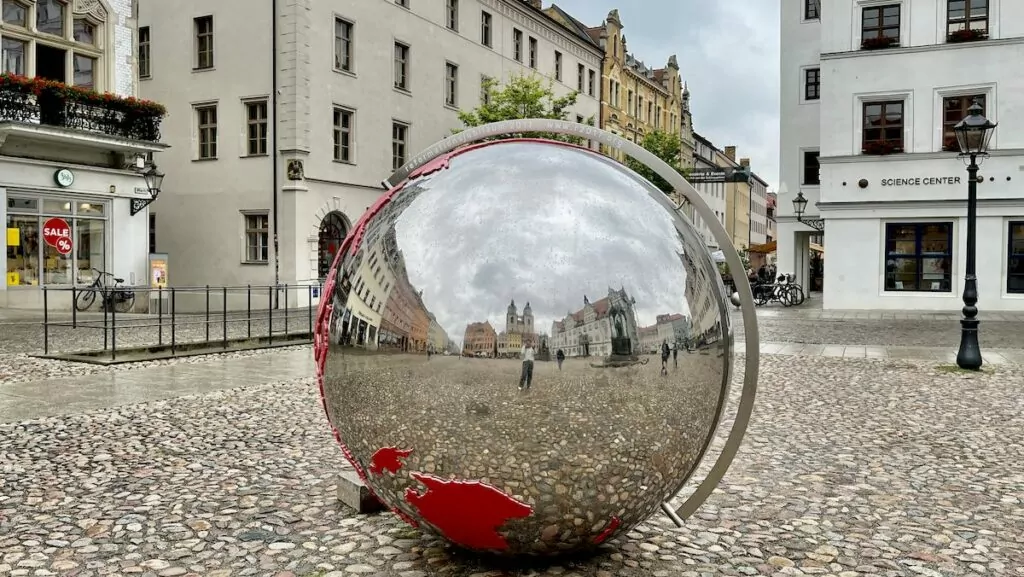
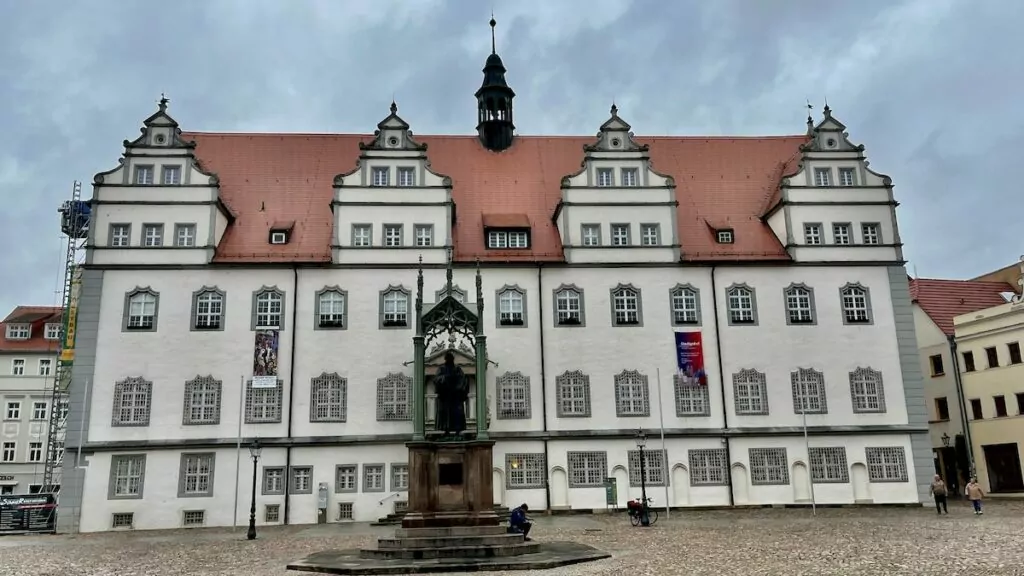
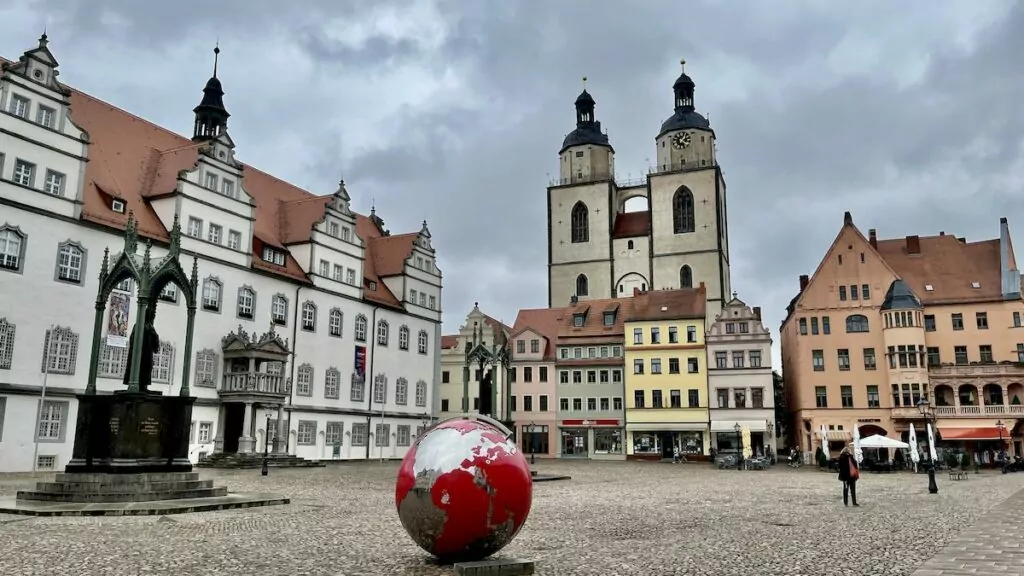
5. Look inside the city church
The Town Church of Wittenberg (St Mary's Church) is the oldest building in Wittenberg and is a UNESCO World Heritage Site. It was in this church that Martin Luther once used to preach.
The famous painter Lucas Cranach the Elder designed the beautiful Reformation altar. Also worth seeing are further paintings by Cranach and the richly decorated baptismal font, created by Hermann Vischer.
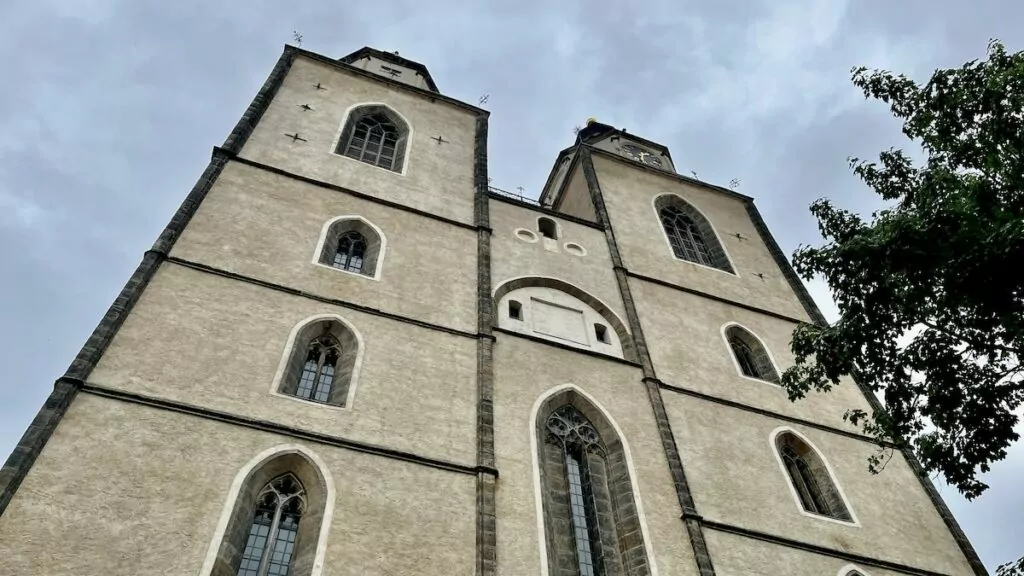
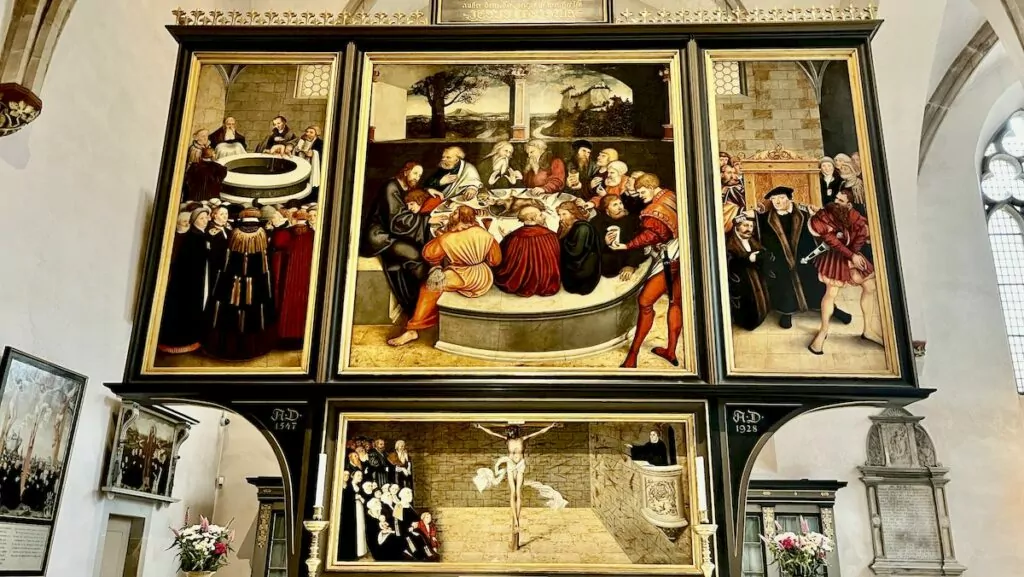
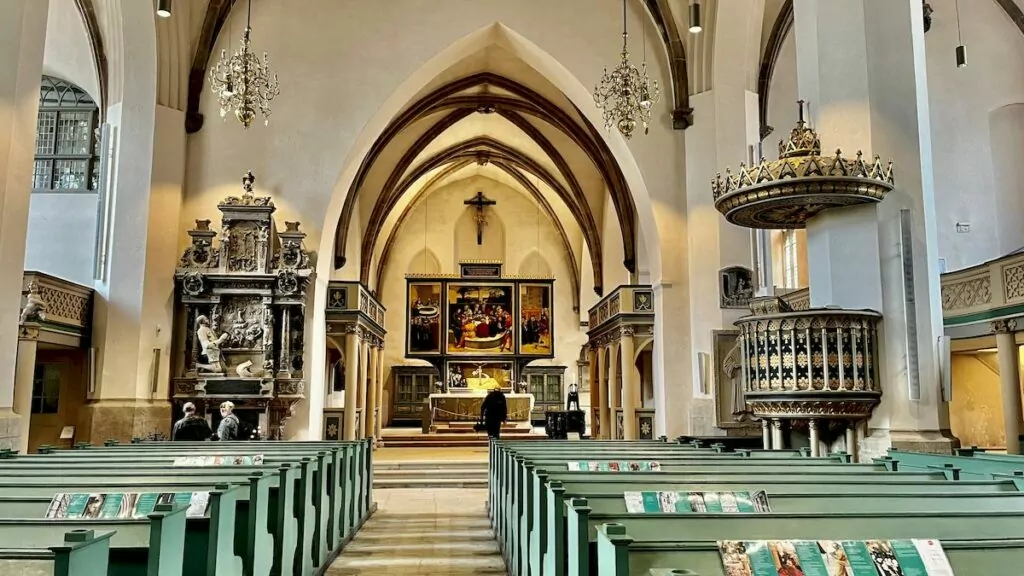
6. Visit the Luther House
One thing you won't want to miss in Wittenberg is a visit to the Lutherhaus (Luther House). Originally an Augustinian monastery, Martin Luther lived here as a monk from 1508.
He later lived here with his wife Katharina von Bora and their children. The front building is called the Augusteum, after its sponsor August I of Saxony, and until 1937 there was a Lutheran school on the ground floor.
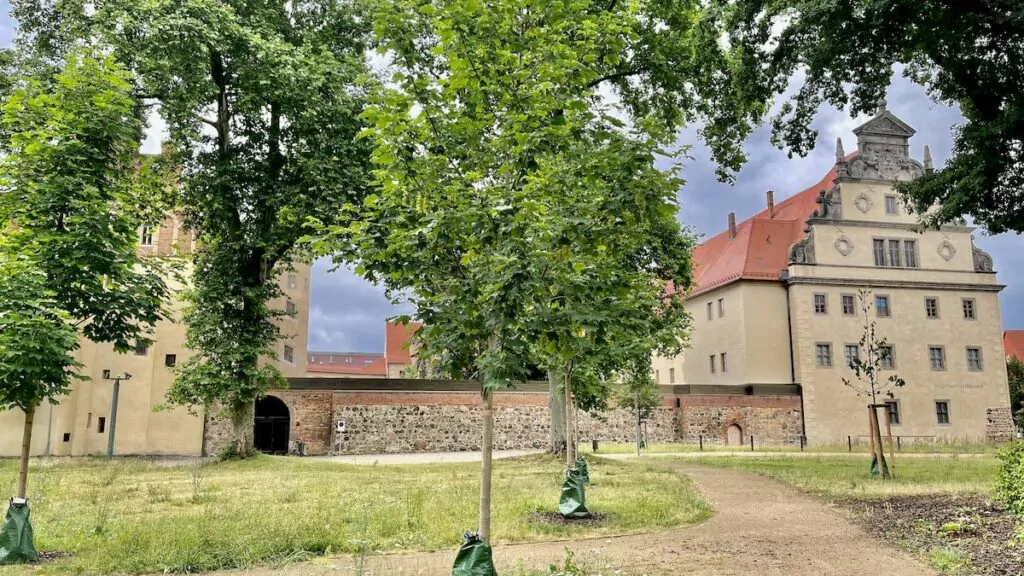
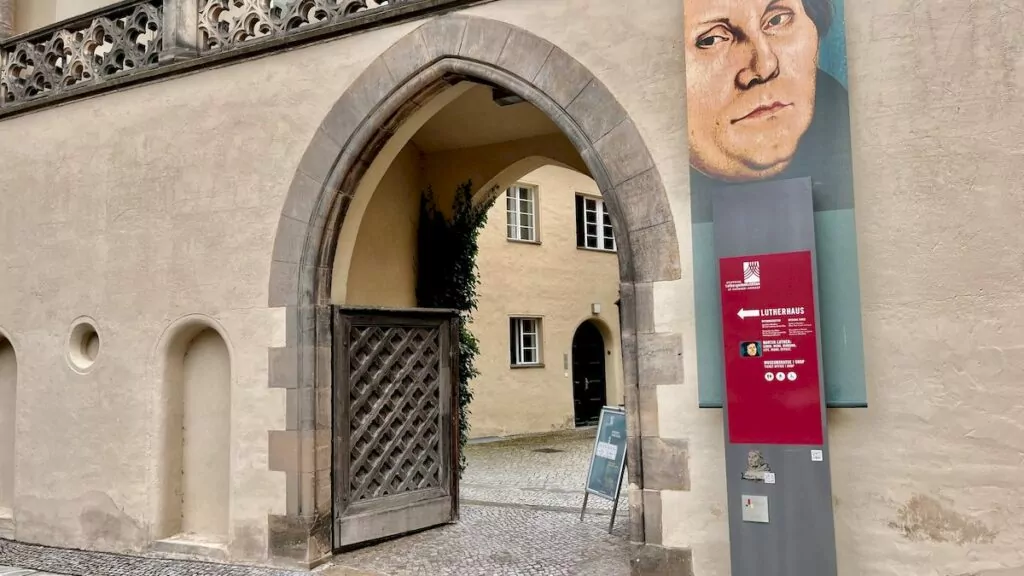
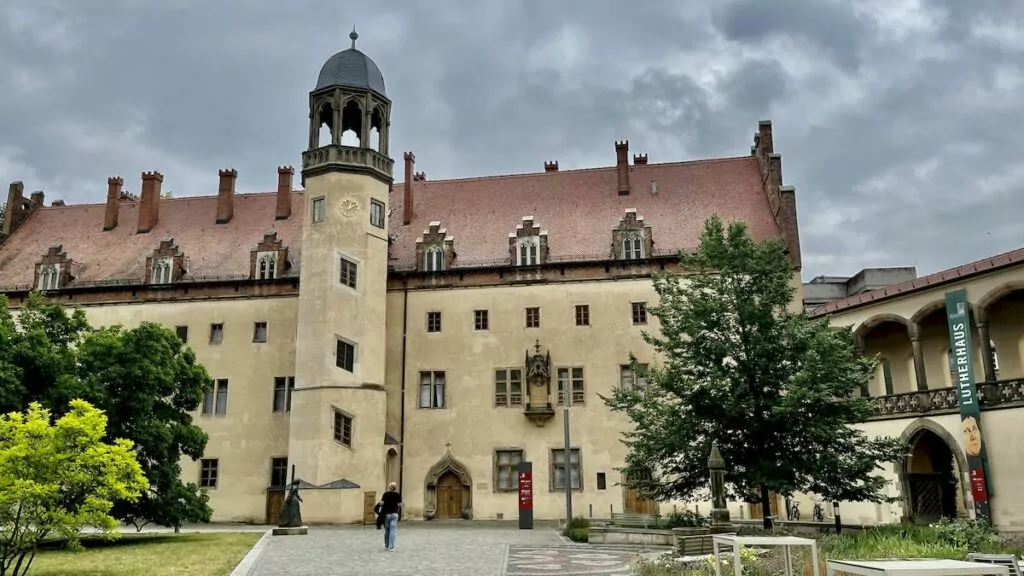
Today, the Luther House is the largest Reformation museum in the world and is also a UNESCO World Heritage Site. The permanent exhibition tells the story of Luther's life and work, as well as his influence on history.
One thing we realised was that Luther's 'family' was very large. In addition to their own five children, the family took in foster children. In addition, Luther had a large number of students living with him, as well as servants. Around 35-50 people may have lived in the house at the same time, and there were many people at dinner every night ...
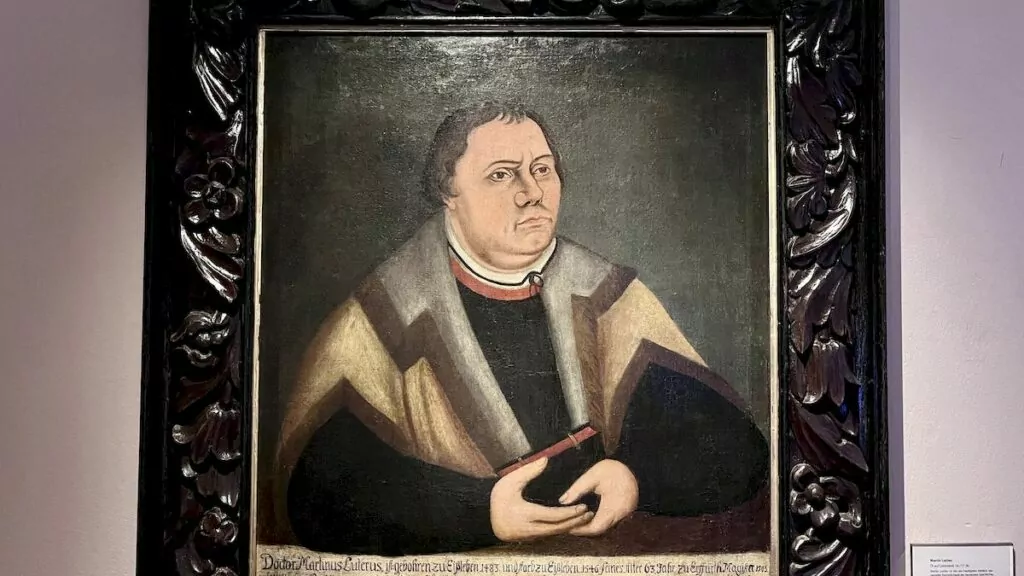
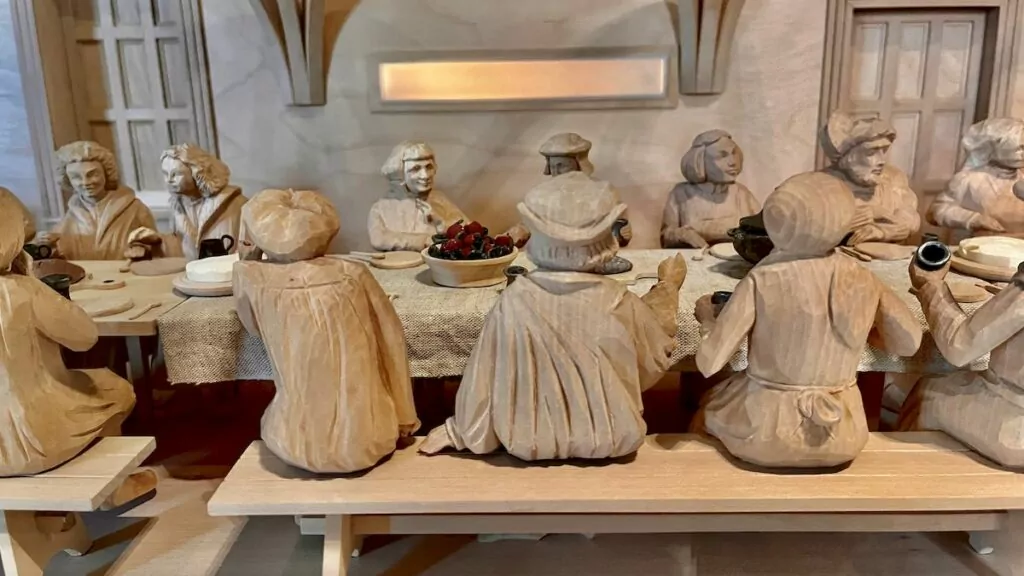
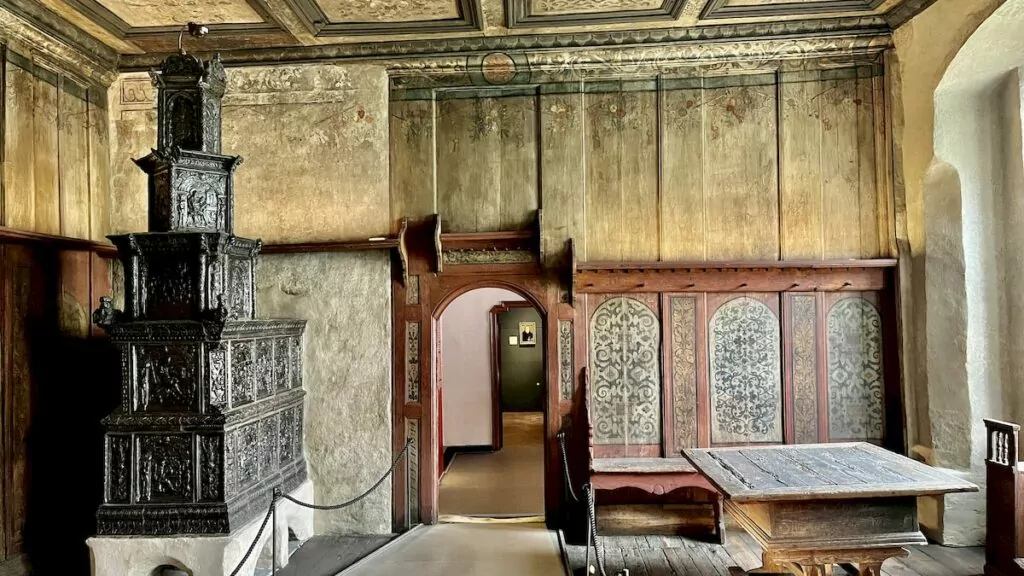
7. Visit Melanchthon's house
Philipp Melanchthon was a German theologian and reformer, and Luther's main collaborator. The Melanchton Haus is a Renaissance house from 1536, where Melanchthon lived and worked until his death. The house (the light-coloured house on the left in the picture below) is a UNESCO World Heritage Site, and a modern building has been built next to it to house the exhibition "Philipp Melanchthon: "Life - Work - Impact'.
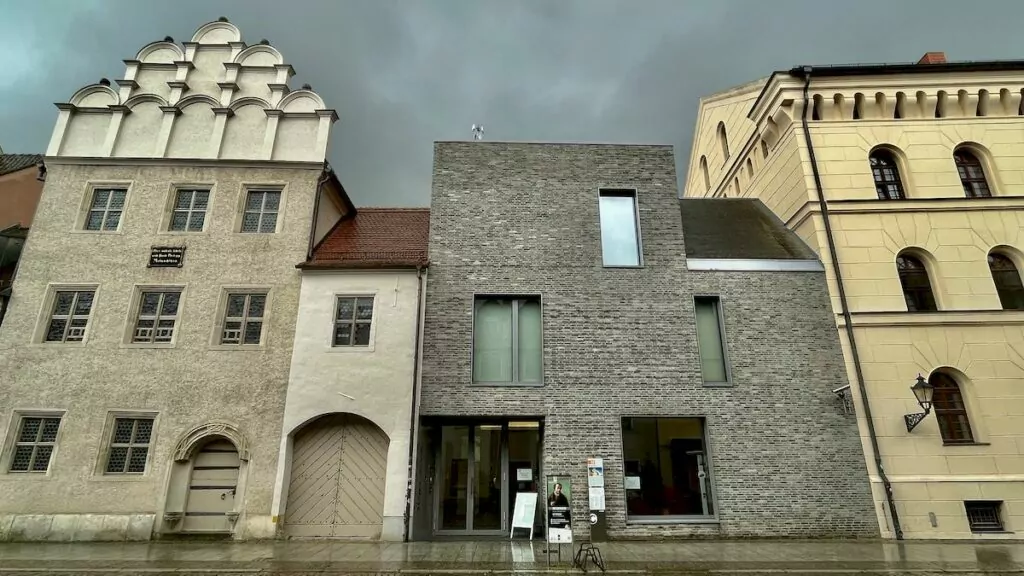
The exhibition explores Melanchthon's life, work and impact on the Reformation. Peter also took the opportunity to test the style of the time... What do you think?
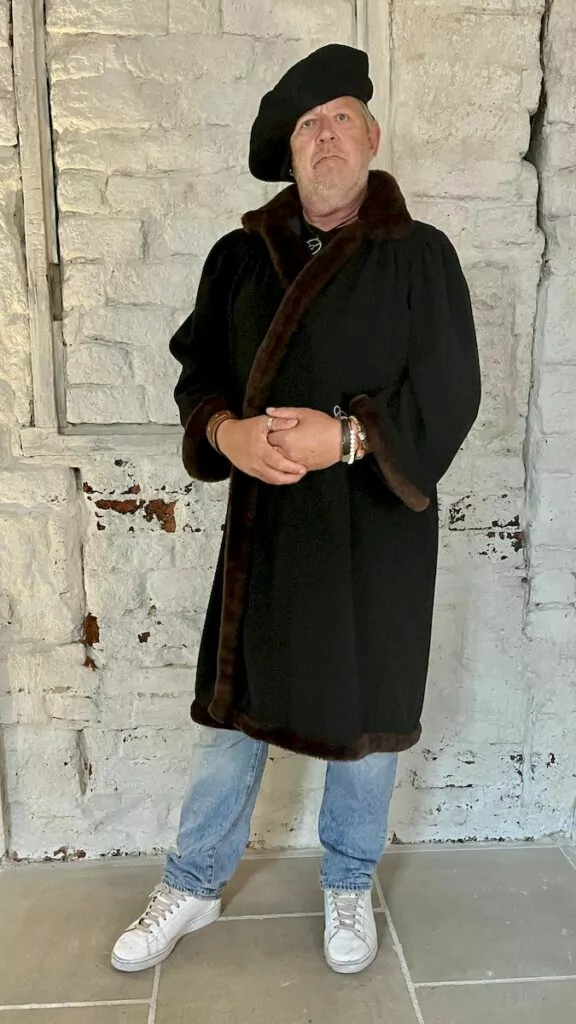
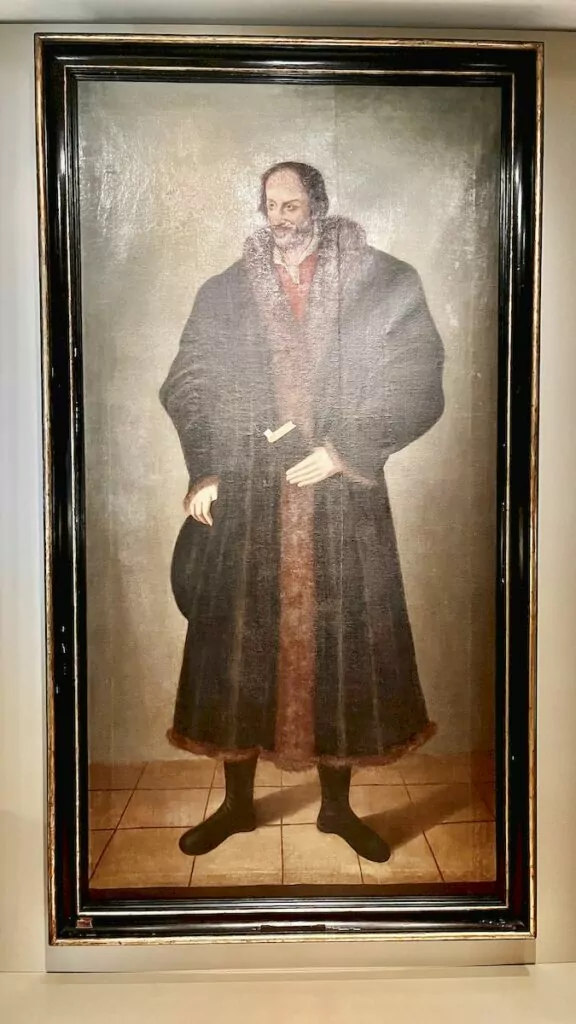
8. Discover 'Cranach's world'
In the early 16th century, the famous painter Lucas Cranch the Elder ran a printing shop at Markt 4 in Wittenberg. Over time, he expanded his business and also acquired Wittenberg's largest farm, at Schlosstrasse 1, where he ran a pharmacy. Today both buildings are listed, and at Markt 4 you can see the exhibition 'Cranach's World'.
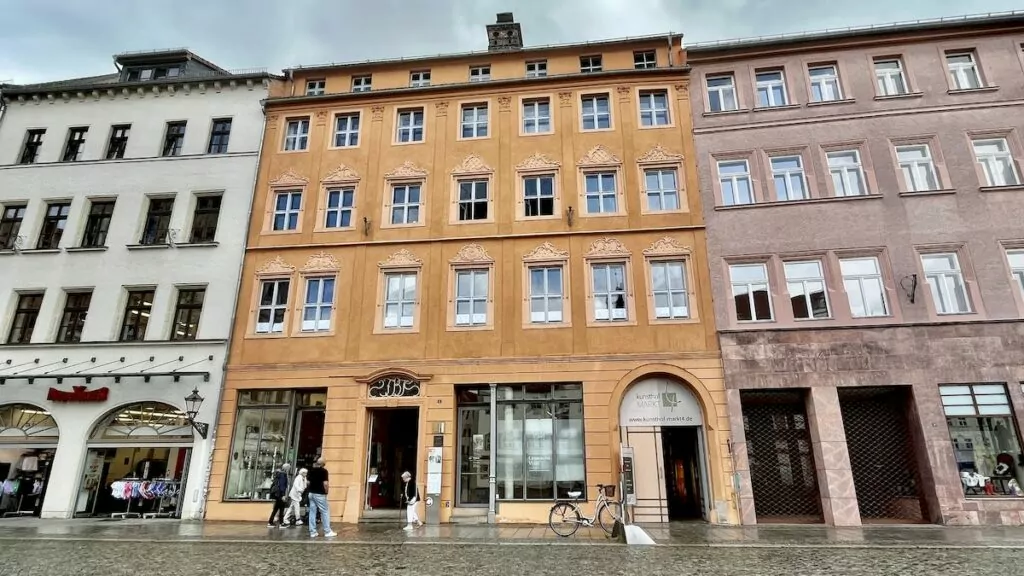
9. Be fascinated by the Panorama "Wittenberg 360°".
If you want to experience the Wittenberg of the past in a more intense way, don't miss the "Wittenberg 360°" panoramic experience. Here you step into a large circular building, the interior of which is covered with a huge panoramic canvas with fantastically detailed illustrations of Wittenberg in Luther's time. Here you can see Martin Luther himself in action, the irritated priests and the crowds of people going about their daily business.
You can view the images from the ground floor, or climb up to a viewing level to get a different view. At the same time, you can listen to stories about the city and its history through headphones. Engaging and fascinating!
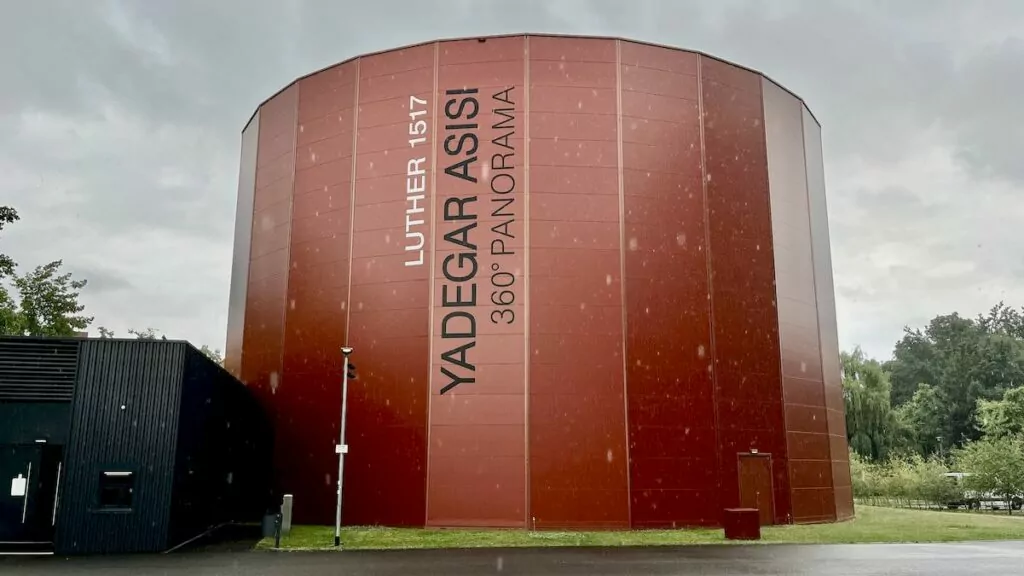
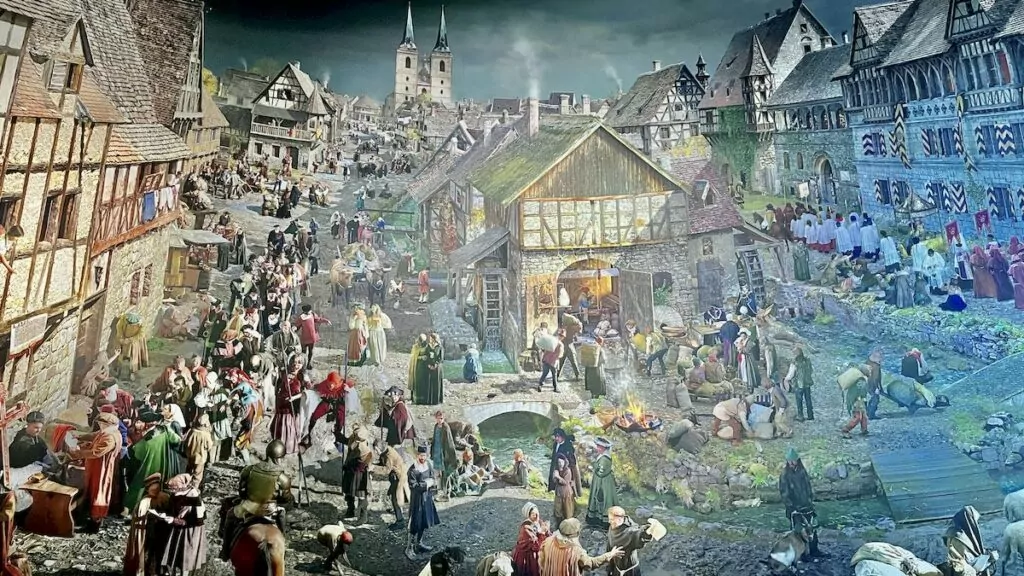
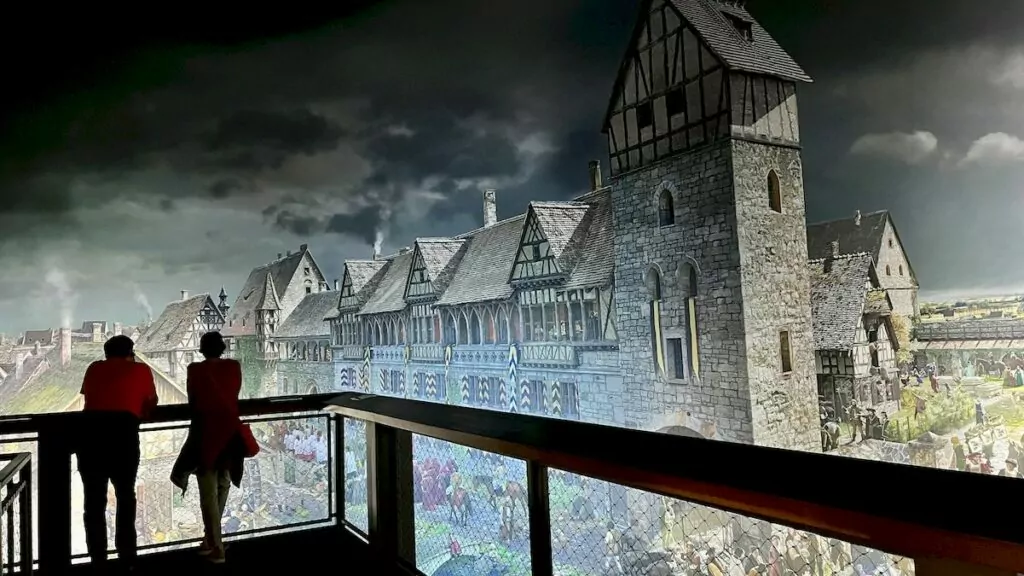
10. Walk at the Piesteritz workers' housing estate
An unusual attraction in Wittenberg is the 'Piesteritz workers' housing estate'. This area once served as home to more than a thousand people in the former chemical factory Reichsstickstoffwerk.
The area was built by urban planner Georg Haberland and architect Otto Rudolf Salvisberg in 1916, with the aim of building functional housing for workers, which also promoted community and proximity to nature. The aim was to achieve a balance between work and private life.
One thing that was revolutionary about the residential area when it was created, and which is still special today and makes the area attractive, is that it is completely car-free. It's amazing how peaceful and idyllic it is without cars!
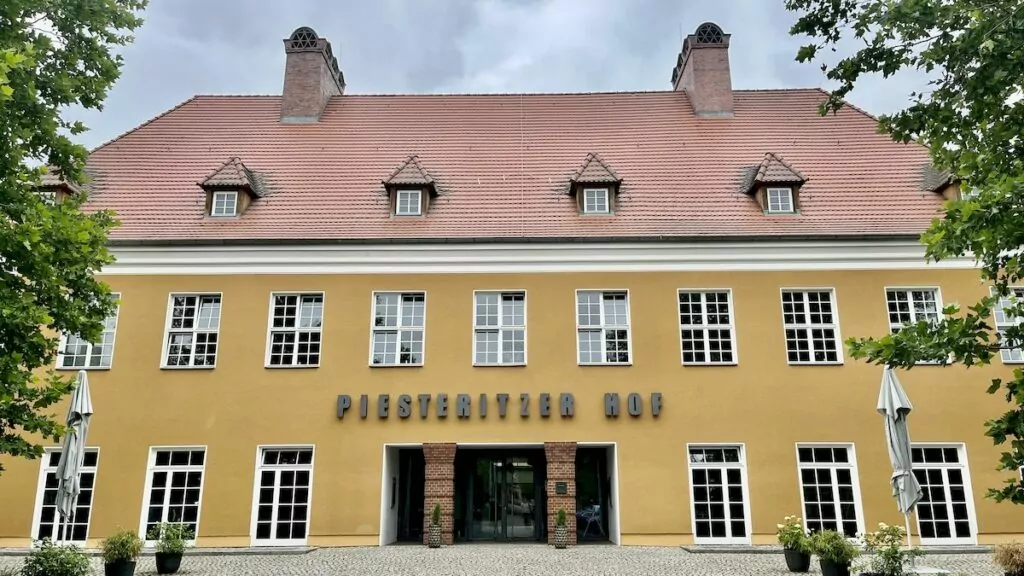
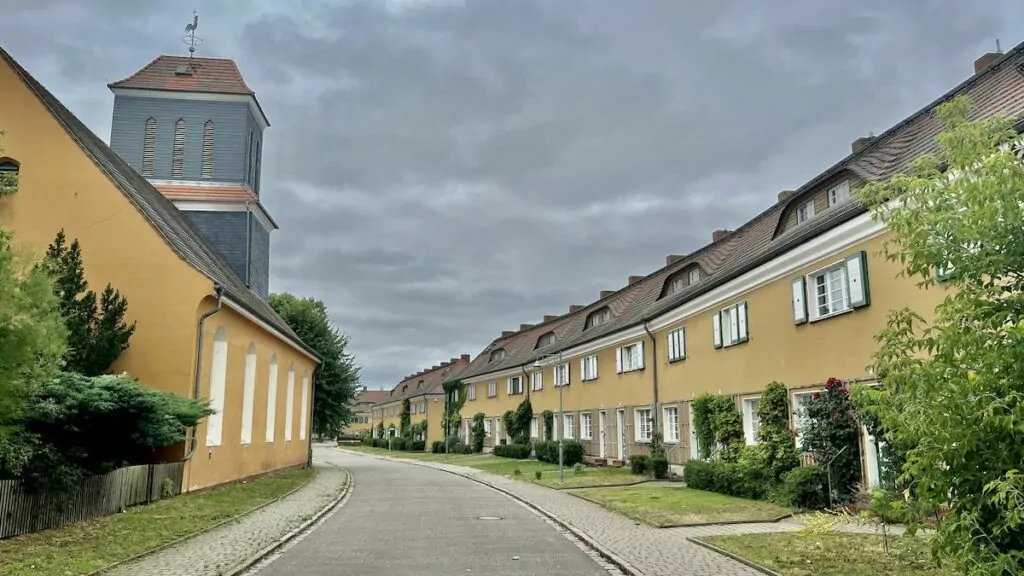
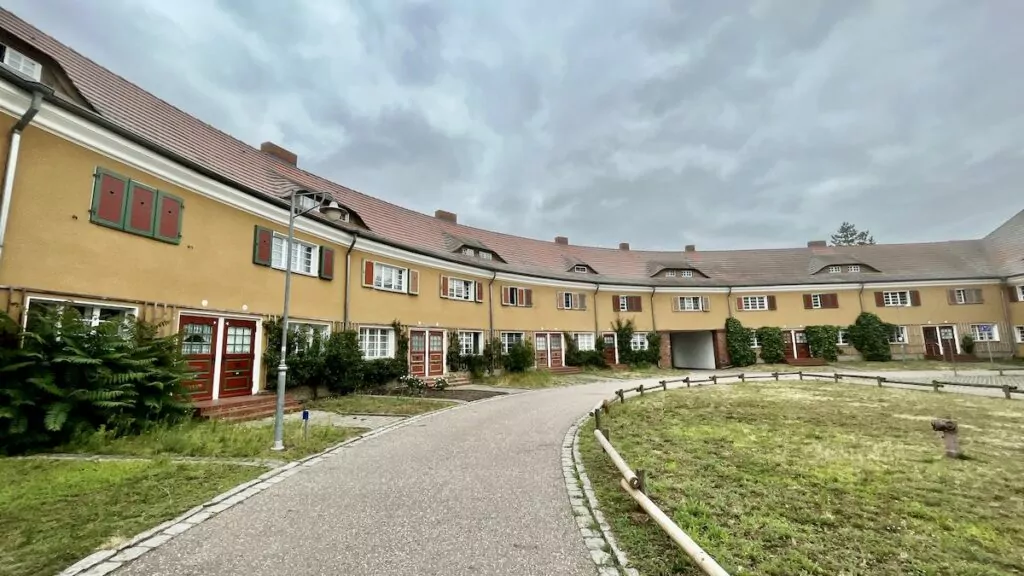
11. check out the Hundertwasser School
When we visited Magdeburg earlier in this trip, we familiarised ourselves with the fantastic The Green Citadel, created by Friedensreich Hundertwasser. What a lovely surprise when we discovered that there is a building by the same artist in Wittenberg!
The Hundertwasser School (Hundertwassererschule) was renovated according to the famous artist's plans and was completed in 1999. If you want to see more and get more information, you can book a guided tour.
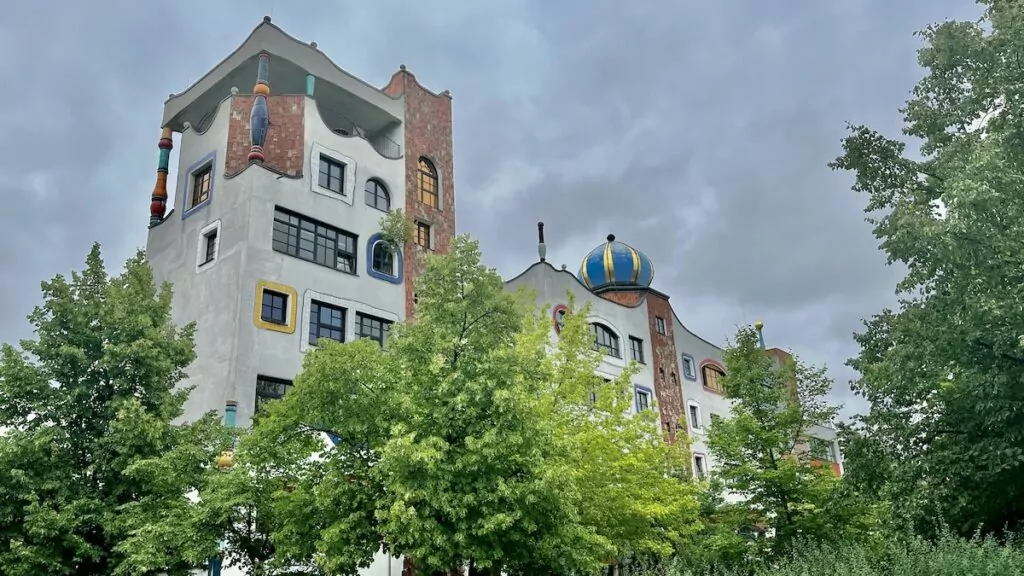
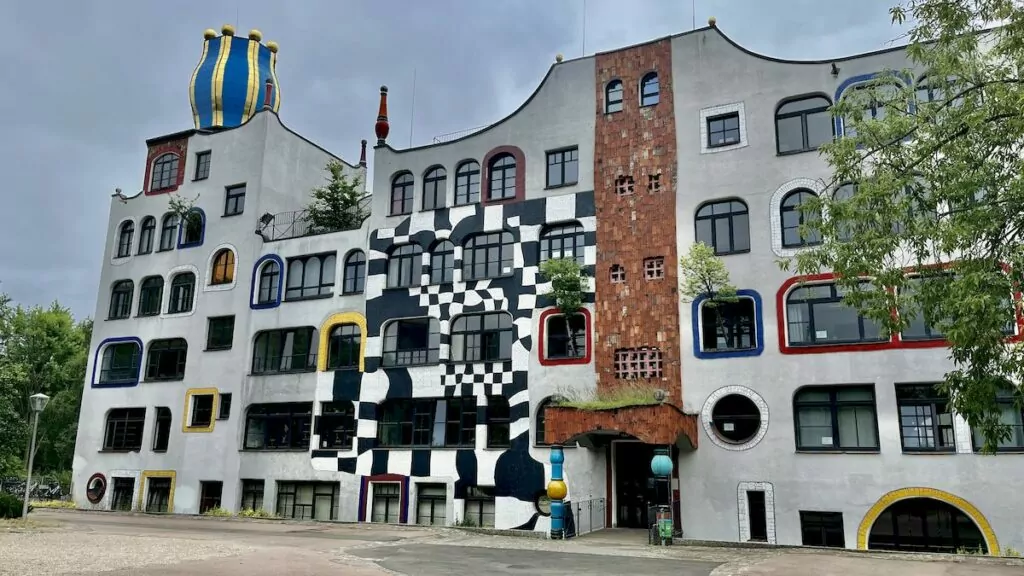
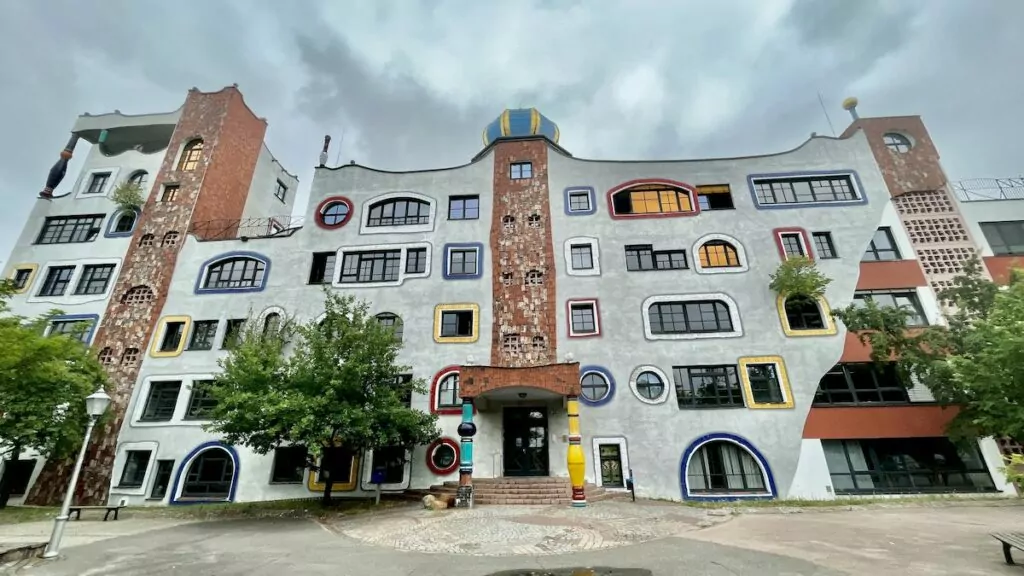
More things to do in Wittenberg for culture and history lovers
Want to experience even more in this beautiful and interesting city? Here you will find more suggestions for things to do in Wittenberg and the surrounding area, for those interested in culture and history.
- Clack Theatre shows theatre and shows (Market 1)
- Leucorea is a university founded in 1502, where Martin Luther studied. The buildings, except for the Augusteum, are not original (Collegienstrasse 62).
- Luther Garden is a park that is a project of the Lutheran Church (Kurfürstenring).
- Museum of Town History is a museum that tells the history of the city. (Zeughaus, Juristenstrasse 16a)
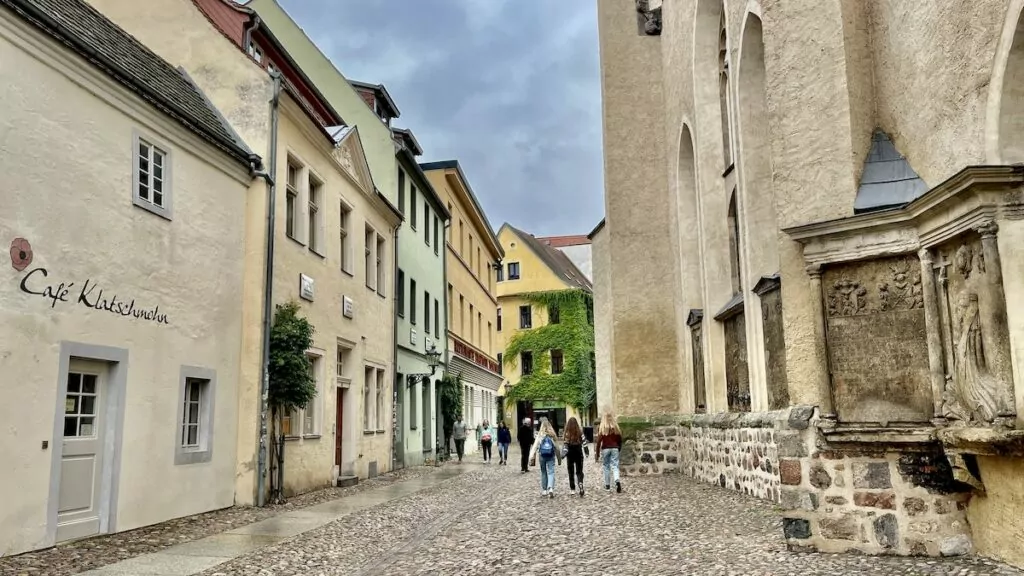
More to do in Wittenberg for those travelling with kids or teens
Travelling with children or teenagers? Then you'll find some more tips on things to do in Wittenberg here.
- Alaris Butterfly Park (Butterfly Park) showcases exotic butterflies (Rothemarkstrasse 131).
- Tourist train can take you on a tour of famous places in the city.
- Fläming Nature Park offers beautiful nature, as well as signposted cycling and hiking trails.
- Wittenberg Zoo has aphus, aquarium and other animals (Pfaffengasse 8).
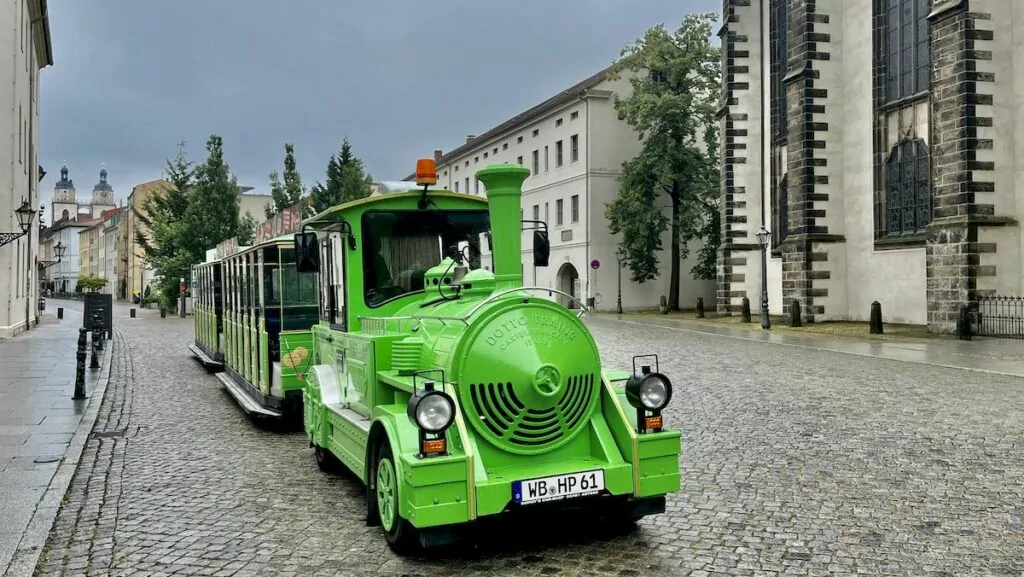
Where can you live or stay with your campervan?
There are of course many different hotels and other accommodation options in Wittenberg to choose from. We visited Wittenberg by motorbike and stayed at the car park at the Hotel Wittenberg, at Kurfürstenring 32. It is located in the courtyard of the hotel and has space for four motorhomes.
The location is very close to the city centre, making it an excellent starting point for visiting the city. The staff was also friendly and we felt safe.
However, we found the price high in relation to the level of service. For 20 euros / day you can stand on the site, for 5 euros extra / day you get electricity and for another 5 / euro you can borrow a toilet and shower (2022). No other service is available, i.e. neither garbage collection, fresh water nor grey or black water drainage.
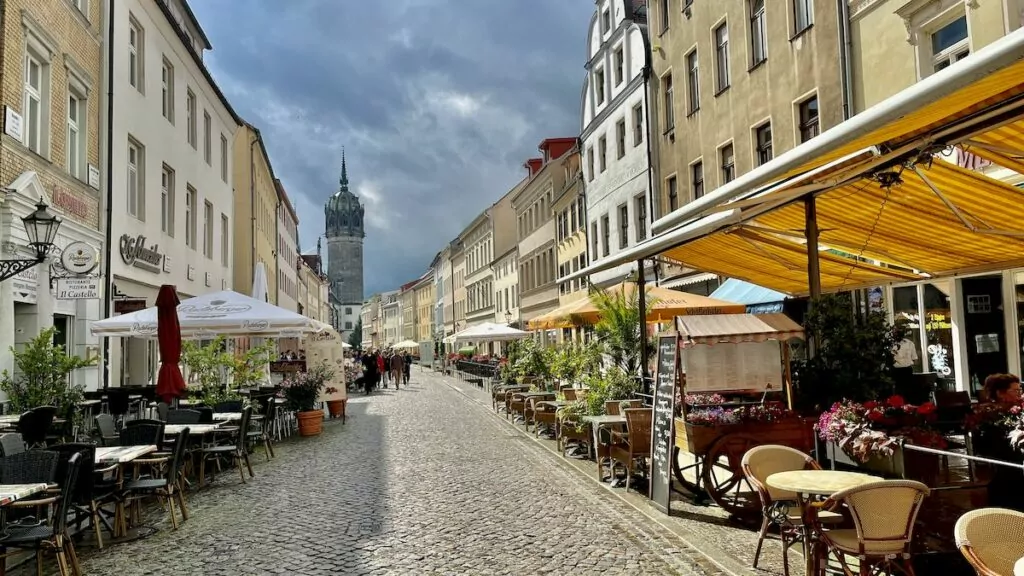
More to see and do near Wittenberg
There is of course more to see and do in the vicinity of Wittenberg. For example, you can visit the beautiful garden city of Dessau-Wörlitz and the city of Dessau, famous for the Bauhaus design school. The exciting city of Magdeburg is also not too far away.
Kröslin marina in Germany - the farewell party of the sailing trip
Finally, it was time to sail into Kröslin marina, or Kröslin Baltic Sea Resort...
Holiday with children or grandchildren in Germany
Thinking about a holiday with your children or grandchildren in Germany? The country offers everything from...
Rammelsberg Mine - a Unesco World Heritage Site in Goslar
The Rammelsberg mine is a Unesco World Heritage Site in the German town of Goslar, located in the mountainous area of...
Potsdam in Germany - and Sanssouci Castle
Potsdam in Germany and Sanssouci Palace offered a positive surprise. In Potsdam there are buildings with...
Medieval and Christmas spirit in Nuremberg
We've been treated to both medieval and Christmas spirit in Nuremberg, this German city has...
Lübeck, Germany - Queen of the Hanseatic League
The old Hanseatic city of Lübeck is a harbour city located in Schleswig-Holstein in northern Germany. Here you can...
Sweden in Germany - 12 places with a Swedish connection
There is more of Sweden in Germany than you might realise. In fact, you...
Neuzelle Abbey in eastern Germany - stunning baroque architecture
We have now visited the monastery of Neuzelle in eastern Germany. You don't have to be interested in churches...
Moritzburg Castle near Dresden - a fairytale hunting lodge
Moritzburg Castle near Dresden is a beautiful and fabulous hunting and baroque castle, well worth a visit....
Krummin guest harbour - and bike ride to Freest and Wolgast
Krummin guest harbour is a nice guest harbour on the island of Usedom in Germany. We sailed here, with South...
Oktoberfest in Germany - and other German folk festivals
Who doesn't want to experience Oktoberfest in Germany? We've gathered everything you need to know to...
North Sea coast in Germany - Husum and Sankt Peter-Ording
Our last stops during this summer's long motorhome trip were Husum and Sankt Peter-Ording on the North Sea coast of Germany....
Germany's longest suspension bridge - Titan RT in the Harz Mountains
Germany's longest suspension bridge, the Titan RT, spans the Rappbode valley and dam in the Harz Mountains. From...
Trier in the Moselle Valley - Germany's oldest city
Trier is Germany's oldest city, located in the Moselle Valley (Rhineland-Palatinate), near the border with Luxembourg. This...
Fairytale castle in Germany - Neuschwanstein in Bavaria
Fairytale castle in Germany - Neuschwanstein in Germany is located in south-west Bavaria on the border with Austria. Disney designed...
The Roman Empire in Germany - 6 sites from the Roman period
The Roman Empire in Germany? Yes, indeed! Ancient Rome was a powerful empire that originated in Rome, but...
Thale in the Harz - among witches and devil walls
Thale in the German Harz Mountains - you come here to experience dramatic scenery, mixed with...
Things to do in Hamburg - 23 sights and experiences
What to do in Hamburg? This northern German city offers harbour life, boat trips, culture and the world's...
Things to do in Celle, Germany - 12 tips for the half-timbered village
What to do in Celle, Germany? This historic little town offers a fantastic range of...
Ostsee camping in northern Germany - and party with the gang
We have, together with eleven other motorhomes, spent three nights at the Ostsee camping in Zierow outside...
4 German themed roads we dream of
German theme roads offer ready-made routes through picturesque landscapes, often with sights lined up in a row. Wine route,...
Elbphilharmonie in Hamburg - concert hall and landmark building
The Elbphilharmonie in Hamburg is a concert hall, but also a landmark. This year, the concert hall is 5 years old,...
Things to do in Bamberg - 14 tips for a lovely German town
What to see and do in Bamberg, Germany? This fine and delightful German city, whose...
Rügen Island in the Baltic Sea - Germany's riviera
The island of Rügen is a beach paradise in northern Germany, with chalk-white cliffs and charming holiday resorts. We have...
Burg Hohenzollern in Germany - on top of a mountain
Hohenzollern Castle in Germany is located high up on a mountain, and you have to go through...
Visiting Stralsund - a German little gem
Don't miss out on a visit to Stralsund if you're in north-eastern Germany. This pretty little...
Restaurants in Hamburg - our top 7 tips
Restaurants in Hamburg we can tell you about today! During our visit to Hamburg we had time to eat ...
Regenstein Castle in Blankenburg - and sandstone caves
Regenstein Castle in Blankenburg is a historic ruined castle in the German Harz region. Here you can...
From camping Güster to Ostsee camping, northern Germany
The "Beach Basket Challenge" motorhome trip in Germany continues and we have now made it from camping Güster at Am...
German specialities in different regions - don't miss these
German specialities, what are they? German food varies from region to region, and there are many...
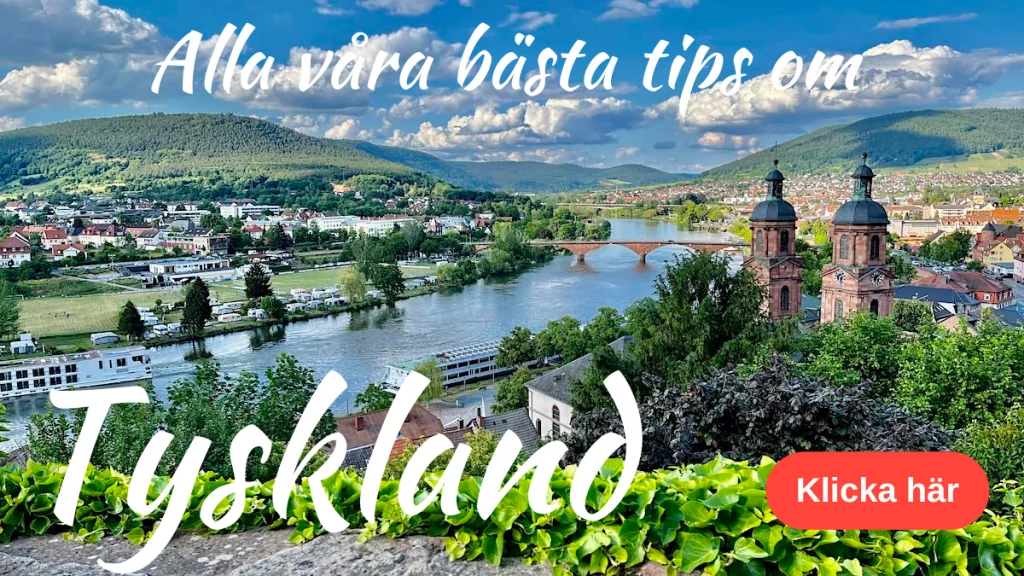
More tips for things to do in Wittenberg?
Have you been to Wittenberg? Tell us about your experience and your relationship with the city! Do you have even more tips for things to see and do in Wittenberg?
Facts about Wittenberg
- Country: Germany
- Federal Republic of Germany: Saxony-Anhalt
- Name: Formally "Lutherstadt Wittenberg"
- Residents: Around 46 000 (2019)
- Read more: You can find more information at the city's tourist office.
Travelling to Wittenberg
- Flight: For example, you can fly to Leipzig/Halle. From here you can continue by train or car hire.
- Car: You can take a ferry, for example Nynäshamn - Rostock or Ystad - Sassnitz. From Sassnitz to Wittenberg it takes about 4.5 hours to drive.

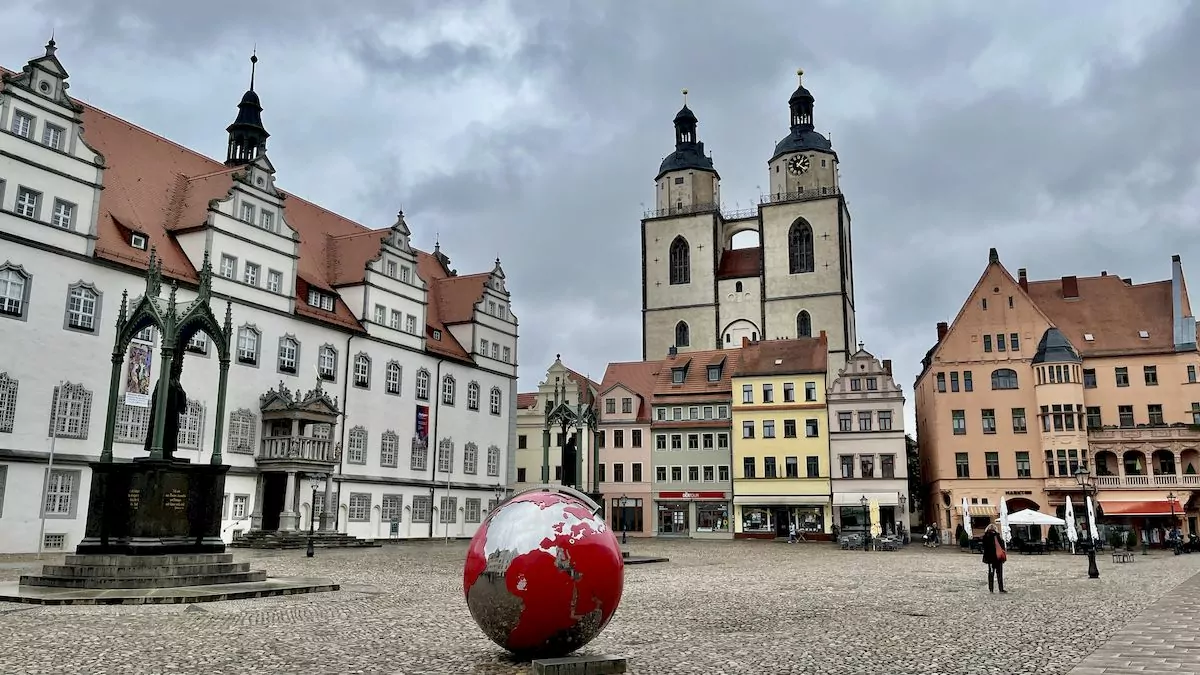
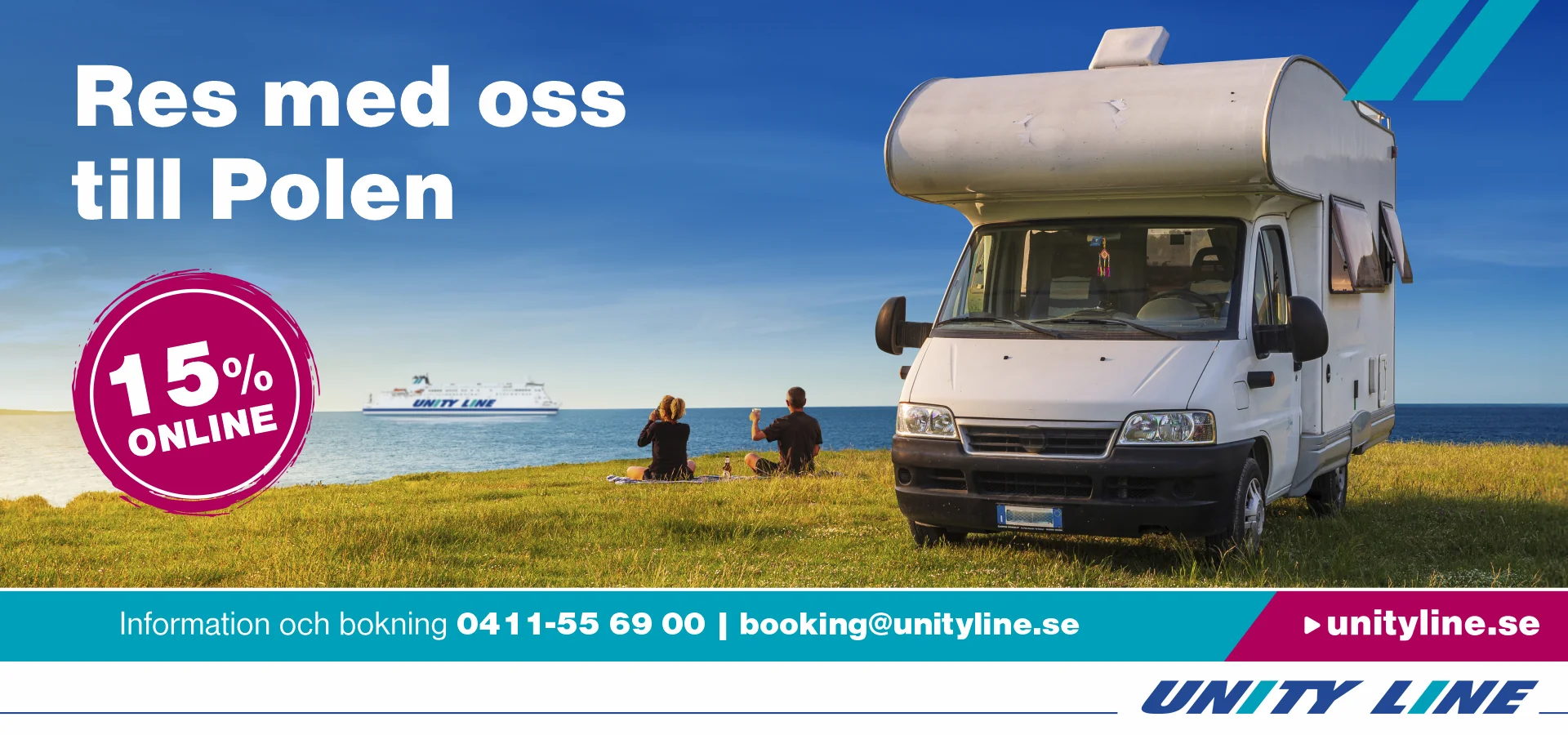








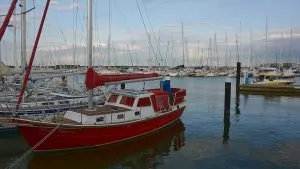

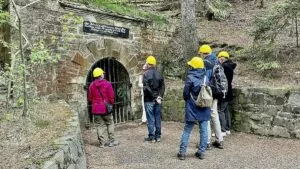
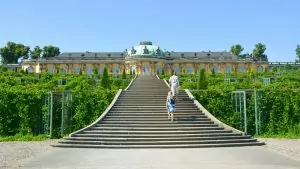
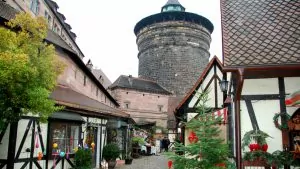
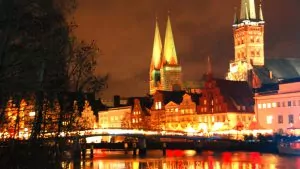
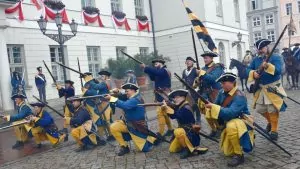
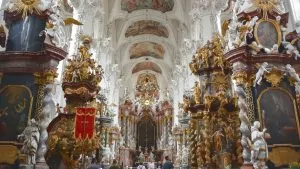
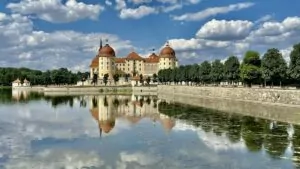
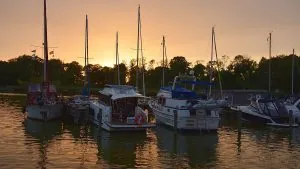
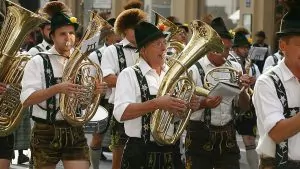
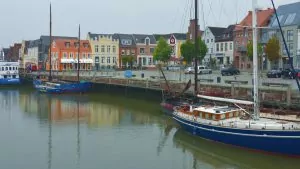
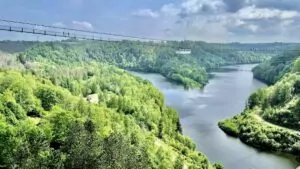
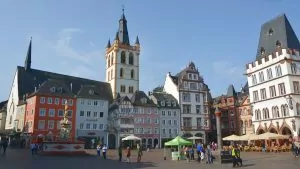
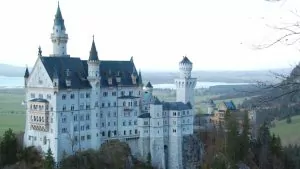
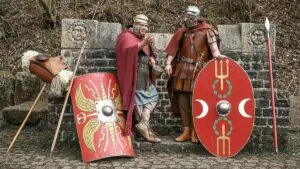
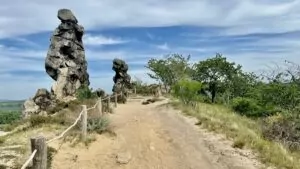
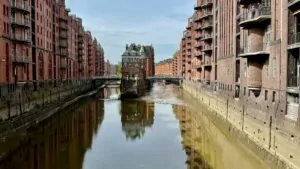
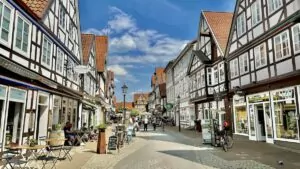
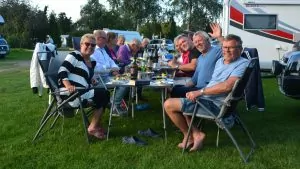

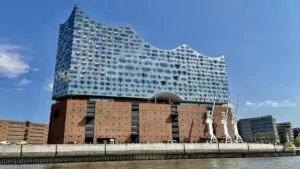
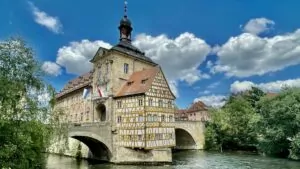
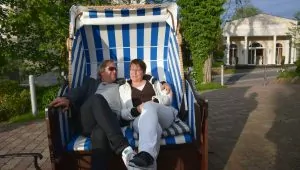
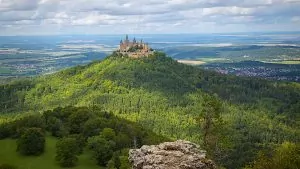
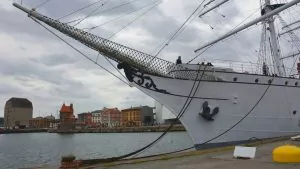
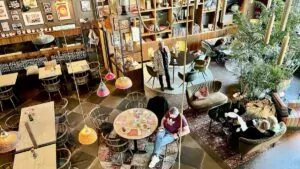
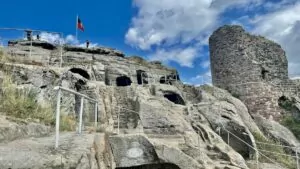
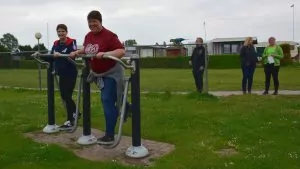
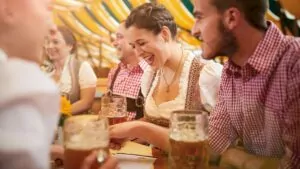
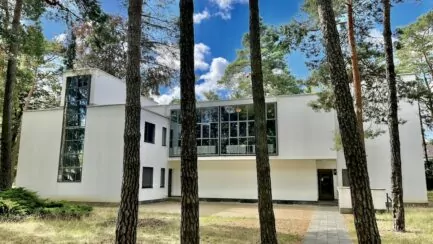
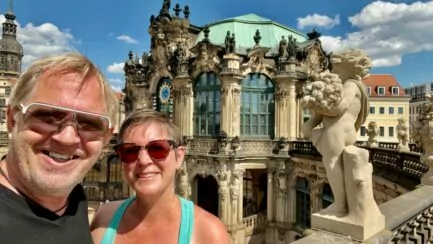
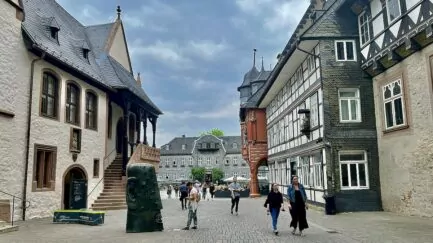
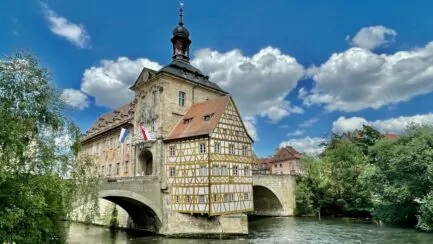
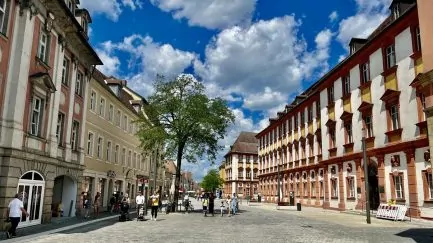
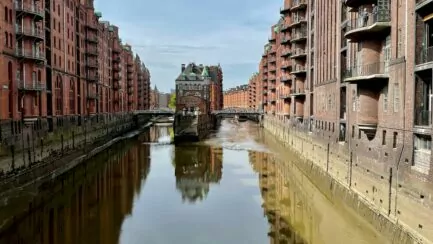



Annar Aas says:
Great report from Wittenberg. For understandable reasons I have been there a few times, both with young and old. You make one long to go there again.
21 July 2022 - 9:16
Helena says:
Yes, we can understand that you were there! So glad you liked our report! 😍
21 July 2022 - 12:11
joakim fransson says:
Yes, Wittenberg is nice. And I hope you tried the beer from there. Then there is a very nice campsite / camping a bit away in Coswig called Marina-Coswig and is located right down by the Elbe, so if you have not stayed there, try it next time you are in the neighbourhood./Jocke
22 July 2022 - 7:58
Lena+i+Wales+och+Spanien says:
Very interesting and recognisable from Wittenberg. Have been there a few times as a tour guide. Seen most things, but not everything.
23 July 2022 - 10:31
Benny Brockmark says:
The towns of Wittenberg and Wittenberge are sometimes confused. It is Wittenberge that is located north-west of Berlin.
07 June 2023 - 22:52
Helena says:
It should of course say south-west! Thank you for your attentive comment! Have changed now!
08 June 2023 - 5:49